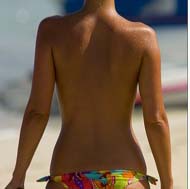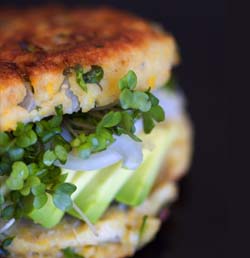 We all know there is no such thing as a safe tan. The National Institutes of Health has placed ultraviolet radiation, both from the sun and from tanning machines, on its list of known carcinogens. We also know the incidence of skin cancer continues to climb. In 2008 alone, more than 1 million new cases were diagnosed in the United States.
We all know there is no such thing as a safe tan. The National Institutes of Health has placed ultraviolet radiation, both from the sun and from tanning machines, on its list of known carcinogens. We also know the incidence of skin cancer continues to climb. In 2008 alone, more than 1 million new cases were diagnosed in the United States.
Then why do we still value that sun-kissed look? We see it in magazines, on the red carpet, on television. Perhaps we like what it stands for–a life of leisure where tanning is a luxury, a sign that, “Hey, I can lie on the beach at a fabulous resort and look healthy and happy.” But then again, who dictates those norms of beauty? I think Cate Blanchett is gorgeous. Her flawless, creamy skin harks back to a time when pale skin was a sign of the cloistered leisure class and only peasants were tan from working hard with their hands outdoors.
I suppose such visions of beauty are dictated by cultural norms. For example, in Asia, women have been known to bleach their skin to achieve perfectly white, blotch-free flesh. As for myself, I’m certainly no Cate Blanchett and I envy women with perfect, pale complexions. I am an olive-skinned Jewish American woman who spent most of her adolescence on southern California beaches working very hard to get the darkest tan possible. Today, I have the sun-damaged skin to show for it and while I no longer tan, I do long for those days where that feeling of sunshine washing over me, and that overdose of vitamin D produced, dare I say it, a deep, sexy tan.
But I’m in Los Angeles, and here there’s no shortage of places to get your fake-bake on. I’ve never indulged, so when I was invited by the Kinara Spa to experience the sunless, spray-on tan, my curiosity piqued.
The Kinara aesthetician, Amber Klinck, a surfer with her own perfectly bronzed skin, assured me I wouldn’t look too dark. “The Malibu Barbie look is out,” she told me. “We go for a nice healthy glow. Being too tan is just too tacky.”
Klinck also told me that Kinara’s sunless tan product, called St. Tropez, contained the active ingredient dihydroxyacetone (DHA). I did a little research and found out that the Skin Cancer Foundation deems DHA safe and considers it to be the most effective sunless tanning products. It’s been approved by the FDA since 1973 and it’s the active ingredient in most over-the-counter self-tanners. DHA is a colorless derivative from the sugar glycerin and as it interacts with the amino acids in the dead skin cells on the top layers of the skin, a chemical reaction causes them to darken. The more you apply the darker the skin gets and it takes up to 12 hours to see the results. And since those dead skin layers are constantly being shed, the “tan” usually lasts about five to seven days.
So I stripped down, stepped into a booth, and Klinck wielded her spray gun with precision and focus. She instructed me to make some funny Greek statue poses so she could get to those hard-to-reach spots and she also did some contouring around the fanny to give my butt, well, a little lift.
The result: I look like I have a tan. Yes, a nice healthy tan that inspired me to wear white today, apply bronzer to my cheeks and shiny lip gloss. It’s summer in May. Will I do it again? At $75 a pop, probably not. I’ll leave that to the leisure class. For now, I’m wearing sunscreen over my fake tan and enjoying it while it lasts.
[Image via: Wikimedia Commons]

